Perched on a cliff overlooking the unspoilt River Teme, Ludlow is a historic market town bustling with quaint shops and elegant Georgian buildings.
Home to the crumbling Ludlow Castle and more than 500 listed buildings, all surrounded by the beautiful countryside of the Welsh Marches, the town is a treasure trove of history and interest.
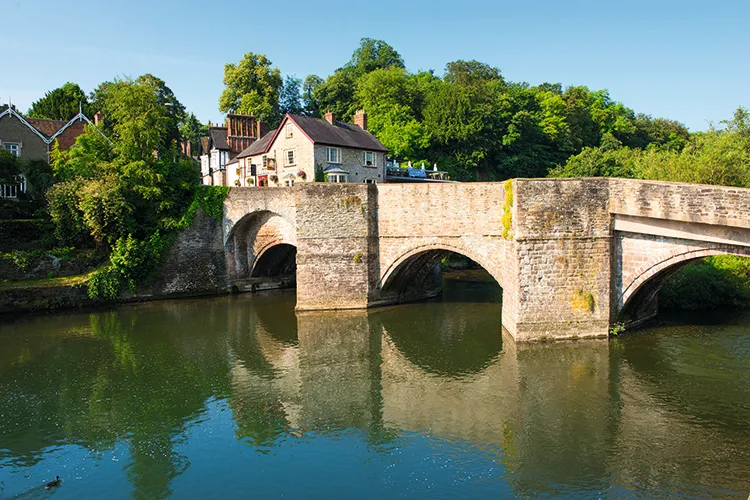
History and heritage
Dating back to 1085, the castle ruins boast an impressive history with Norman, Medieval and Tudor additions, and it has been home to multiple royal visits throughout its many years. The parish church is one of the largest in the country, with colourful stained-glass windows, and is the resting place of poet A. E. Housman.
The castle appears to have had a turbulent effect on various royals – in the 14th century, Roger Mortimer helped his mistress overthrow her husband, Edward II at Ludlow, while in 1473, the Prince of Wales and his brother were held there before mysteriously dying at The Tower of London. In 1502, Prince Arthur, the original heir of Henry VII, also died here, leaving the castle haunted by unsuccessful royals.
Geography
The rolling hills, sweeping valleys and historic villages of the borderlands are easily explored from Ludlow, which is also a short distance from the Severn Valley Railway and Ironbridge Gorge – the heart of the Industrial Revolution.
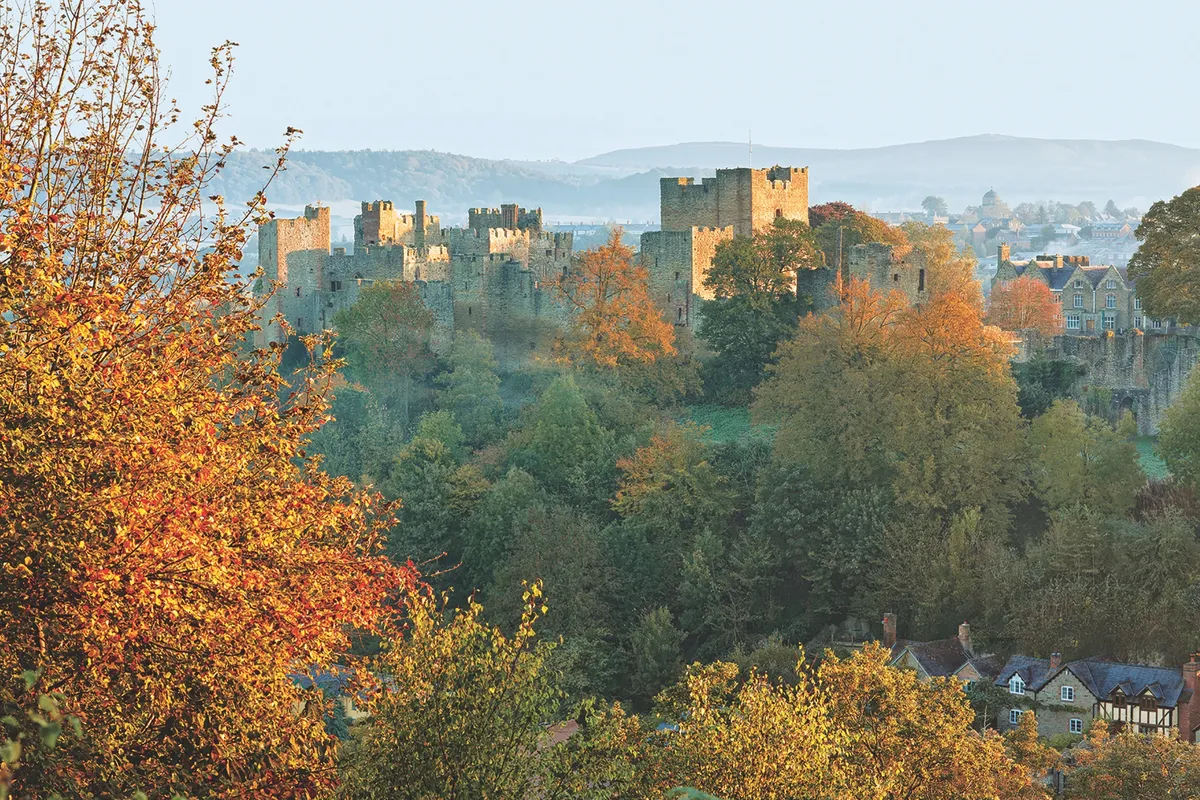
Food festival
As the host of Britain’s first food festival, Ludlow has a strong reputation for excellent food and drink, with the annual September event drawing in hoards of foodies. The castle also hosts a second spring festival in May.
Where to stay
The Feathers Hotel is a tourist attraction in its own right, with an intricately patterned timber façade and delicate little windows. Described by The New York Times as “the most handsome inn in the world”, The Feathers is as beautiful inside as it is out and boasts a central location.
Walks in Shropshire
Linley Beeches

Lean against a Linley Beech and you lean against the vision of Robert More, MP for Bishop’s Castle and later Shrewsbury, in the mid-18th century. The tree-loving MP and explorer (he’s credited with introducing the larch to England) had this mile-long double row of beech trees planted on Shropshire’s Linley Hill.
Surrounded by the Long Mynd, the Stiperstones and Corndon Hill, they march like soldiers down towards More’s family home at Linley Hall. This, and other arboreal adventures, can be found in this secret slice of the Shropshire countryside. Linley Beeches walking route and map.
Long Mynd
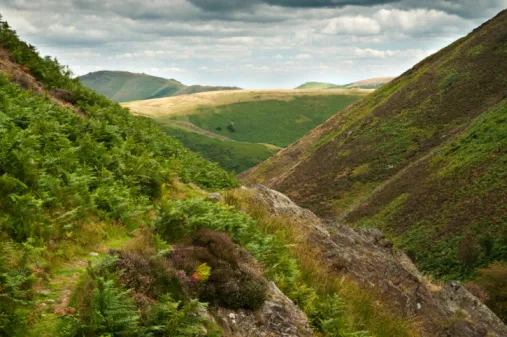
On 39 January 1865, the Reverend Carr spent a night out on the Long Mynd, battling against one of the fiercest snow storms to hit 19th-century Shropshire. This 21-square mile expanse of windswept heather moorland can be notoriously wild in winter. The Burway, the single-track lane that snakes up to altitudes of 475m, is frequently closed in winter, adding a sense of adventure for hikers out exploring this vast plateau. In spring, summer and autumn, the hills are kinder and make for a fabulous outing. Long Mynd walking route and map.
Acton Burnell, Shropshire
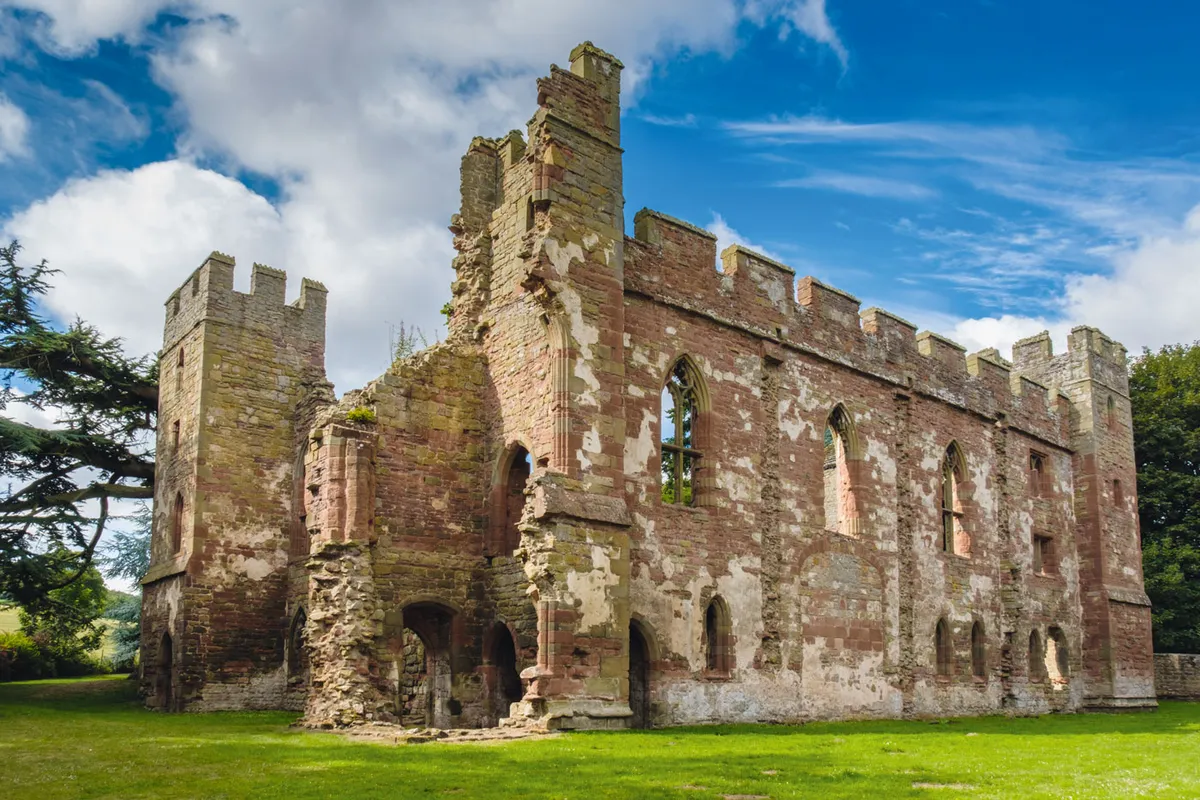
The quiet hamlet of Acton Burnell, tucked deep into the heart of the Shropshire countryside, holds two hidden havens, both so discreet that even many Salopians are not aware of their existence.
Secreted behind St Mary’s Church is an eerie thicket of rhododendron and yew. A mysterious path tunnels through this, as if stepping back through time, emerging suddenly into a formal landscape of structured serenity. The ruins of 13th-century Acton Burnell Castle sit on manicured lawns like a sandstone statue of solitude. Acton Burnell walking route and map.
Caer Caradoc Hill, Shropshire
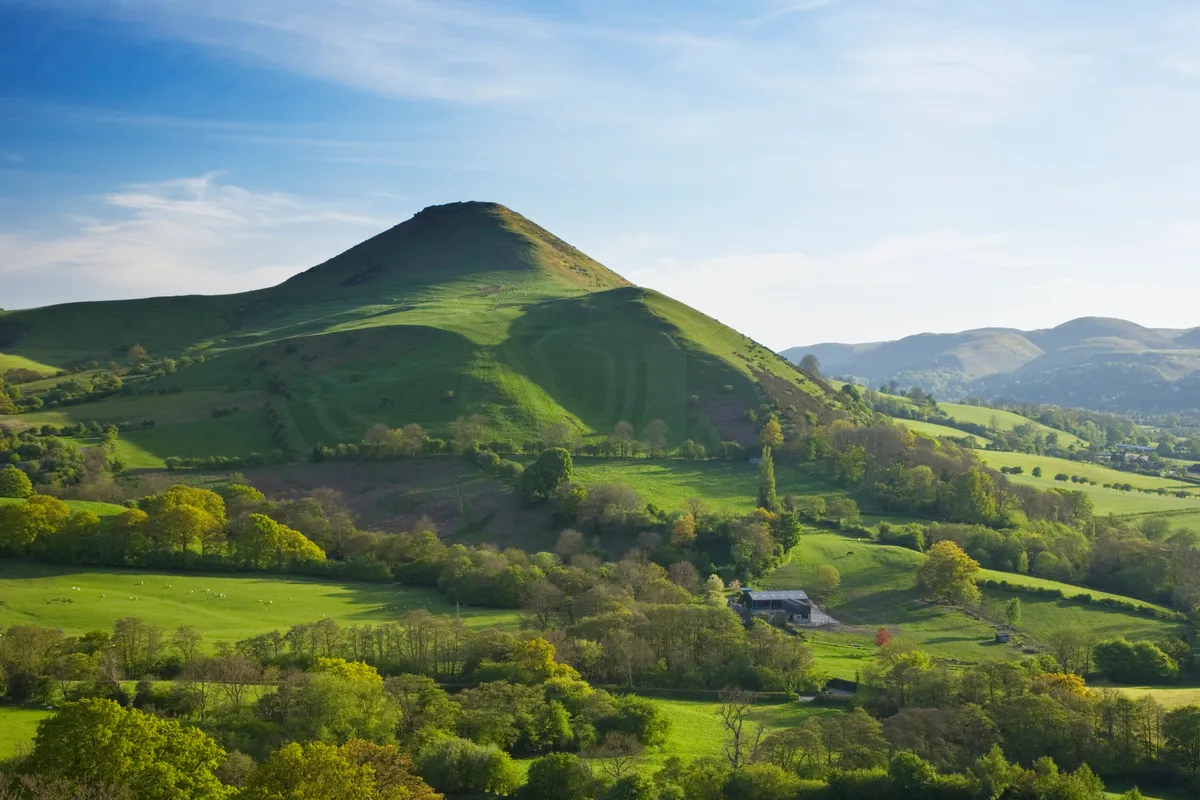
Numerous walking routes emanate from the pretty Shropshire town of Church Stretton, making it a great base from which to explore the surrounding hills and woodlands.
This moderate-level ramble takes you from the train station to the summit of Caer Caradoc and its ancient hill fort – thought to date from either the Iron Age or Late Bronze Age. It’s a stiff climb to the top, but one worth the effort for the spectacular views. Caer Caradoc walking route and map.
Words: Katie Reynolds